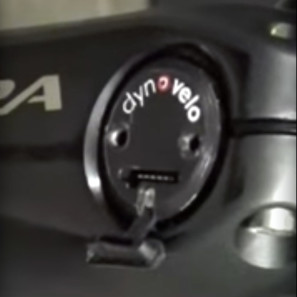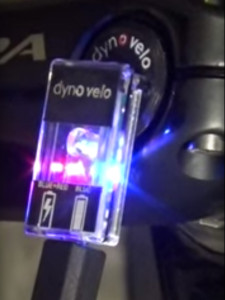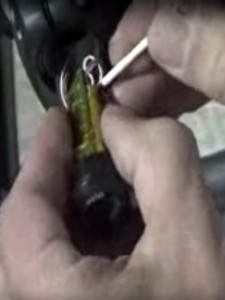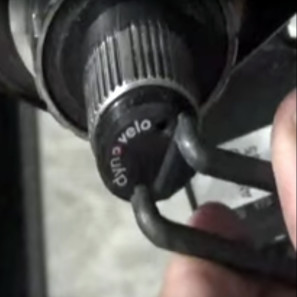The engineers at Dyno Velo have just announced a new power meter together with ANT Wireless, the folks behind the ANT+ communication protocol. The new device is unique in being the first direct-measurement, friction-mounted power meter that fits inside the spindle of a standard crankset. The Dyno Velo Power Meter employs a very simple design that needs only a single extremely accurate strain gauge to calculate the power applied to a crank spindle by measuring its twist.
Hop past the break for more info, an illustrative video, and another way to look at collecting power data…
The entirety of the power meter fits inside the spindle, including a rechargeable 20hr Li-ion battery , with a small communication cap that for example on Shimano cranks replaces the plastic preload cap once the cranks are installed. The Dyno Velo Power Meter uses a gyrometer (gyroscope) to measure cadence or better rotation (angular velocity) in order to calculate and output power data. The communication cap allows the power meter to be connected by USB to a computer for configuration as well as charging.
Designed to be simple to install and setup by amateur mechanics, it also claims to be the first power meter to be completely field calibrated for force calibration and temperature. It comes with easy to use software and needs just one simple weight to calibrate it with the cranks in the 6 and 12 o’clock position. Dyno Velo choose an ANT+ profile as the easiest to use to ensure that it could be dropped in to the widest range of existing bikes and cycling computers.
Not much more is yet known about the Dyno Velo Power Meter, but that it fits in cranks from Shimano, FSA, SRAM, and some Campagnolo, while also able to be removed and installed in another crankset just with a new one-time calibration. So far it isn’t ready for consumers, but Dyno Velo have a lot of the power meters on the road in Alpha testing, and were at Interbike this week setting out feelers. We’ll update as soon as we know more.




